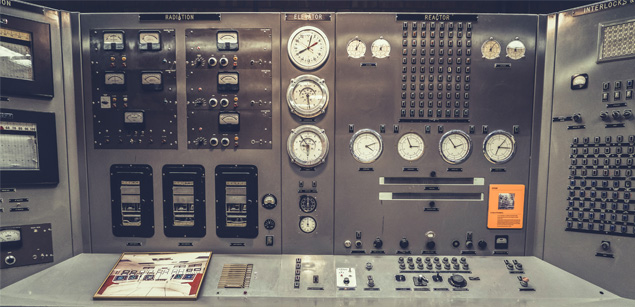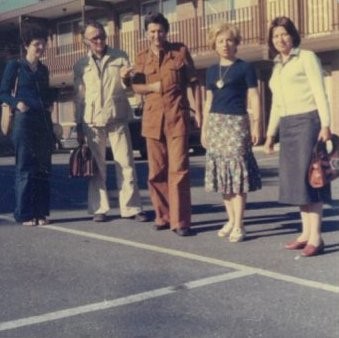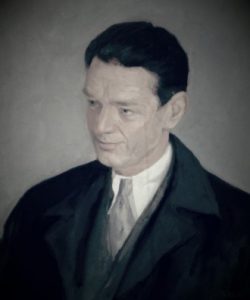Historical development of the Department of Physics
Before the establishment of the Faculty of Science in Sarajevo, physics was studied as the main subject within the Physics Group at the Faculty of Philosophy in Sarajevo within the Department of Science and Mathematics. The study lasted eight semesters, during which it was planned to take 20, mostly two-semester courses, and a graduation thesis. In addition to the mandatory basic mathematics subjects, such as Mathematical Analysis I, Mathematical Analysis II and Linear Algebra, the courses Draft Geometry and Probability Calculus and Statistics are also taken. As for subjects in the field of physics, the subjects are Mechanics, General Physics, Introduction to Physical Measurements, Physical Techniques, Advanced Physics Practicum, Electronics, Theoretical Physics, Selected Fields of Physics I, II and III, and Physics Seminar.

The Department of Physics (originally the Physics Group) was created as a department at the Faculty of Natural Sciences after the separation of natural and mathematical sciences from the Faculty of Philosophy in Sarajevo in 1960.
Teaching took place in stages. The first degree was a two-year study, and the Physics Group had a joint 1st degree study with the Mathematics Group. The II degree meant the continuation of studies after passing all subjects from the I degree and in total (with the first degree) it lasts four years, and the Physics Group had two variants: physics and mathematics – teaching direction and physics and mathematics – laboratory-research direction.
New subjects are introduced: Introduction to nuclear physics, Atomic physics, Solid state physics, History of physics. As early as next year, separate courses will be created: Physics – general course and Physics – teacher course, as a four-year study, and there is teaching of the first degree as an independent unit in the teacher course for a duration of two years, in addition to the teacher course in mathematics with physics.
Several new subjects are introduced instead of Theoretical Physics: Statistical Physics, Electromagnetic Field Theory, Relativity Theory, Quantum Mechanics, Quantum Field Theory and Gravitational Field Theory, and the last two first as optional subjects.
Third-level teaching is also being introduced, after which the right to the academic degree of Master's degree is acquired.
Since 1971 the subject Quantum Theory is divided into Quantum Mechanics and Quantum Field Theory. The first computer that arrived at the Department of Physics in the early seventies of the last century was a PDP-8/E with 12-bit “words”, 4 Kw of base memory and expansion to a total of 16 Kw. Even then, within the Seminar course, students interested in computer topics could learn about programming and calculations.
By the Statute of the Faculty of Science Sarajevo from 1979. new subjects are introduced: Astrophysics, Theory of Gravitation and General Relativity and Physics of Elementary Particles. In the mid-1980s, Computers in Physics was introduced, first as an optional subject (prof. Dr. Zdravko Stipčević, assistant professor Kenan Suruliz). At that time, the computer at the Department was an Iris PC-16. Later, the four-year physics study plan was not fundamentally changed until the introduction of the Bologna study system.
Since 1992, there have been two-subject, two-year teaching courses in physics – mathematics, physics – informatics and physics – chemistry. After the introduction of the Bologna system of study (year 2005/2006), general students can enroll in a 4+1 type study and choose one of three sub-specializations: theoretical, experimental and medical radiation physics. Teaching students until 2012. could choose between 3+2 and 4+1 type studies, and since 2012 there is only a 4+1 study for the teaching major.
Since 2013 there is also a third cycle at the Department of Physics, within the framework of the doctoral study Natural and Mathematical Sciences in Education with study programs Physics in Education and Theoretical Physics.
In 1966, the Department form two departments:
- Department of Experimental Physics,
- Department of Theoretical Physics.These chairs were awarded in 1971. also adds the Cabinet for Physics Teaching Methodology. Later (in 1979), these departments were renamed the Department of Experimental Physics and the Department of Theoretical Physics, and the Department of Applied Physics was also established. The Department still has a Cabinet for Physics Teaching Methodology and an Administrative-Librarian Service.
Such an organization remained until 2001 when the Department included the following organizational units:
- Department of General Physics,
- Department of High Energy Physics,
- Department of Condensed Matter Physics,
- Department of Atomic, Molecular and Optical Physics,
- Cabinet for physics teaching methodology,
- Center for Applied Physics,
- Computer center.
The founder of the Department is considered to be Branislav Galeb, who was the first head of the Department and the initiator of the establishment of the Institute of Physics. Among the first professors of physics at the Department are Krunoslav Ljolje, Dimitrije Čajkovski, Zdravko Stipčević, Fahrudin Kulenović, Nihad Hasić and Dušan Jurišić.
A little later, as part of the integration process at the University of Sarajevo, Egvin Girt, Tamara Čajkovski, Nada Abasbegović, Azra Hujdur, Nadžida Vukotić, Stjepan Marić, Ivan Negovetić, Nada Marjanović-Gabela, Aleksandar Vrcelj and Professor Antun Tripalo came to the Department, mostly with Faculty of Mechanical and Civil Engineering.
Some of these lecturers stay at the Department for only a few years. Electronics was taught by professor Pavle Kaluđerčić. A little later, the graduates of the Physics Department of the Faculty of Science, Sarajevo Kenan Suruliz, Dušanka Hadžiahmetović, Mirsada Pirić and later Tatjana Mihać, Gordana Knežević and Muhamed Busuladžić joined the Department as new assistants.

For several years, Josip Brana (later elected assistant professor) and Slavenka Vobornik worked at the Department as assistants to Professor Ljolje. After prof. Kaluđerčić, in the 1980s electronics, was taught by prof. Nenad Tanović, and the assistant on that subject is Ljiljana Milošević.
In that period, Nenad Ilić and Damir Bečirević also held exercises. Suada Sulejmanović is coming to the Metal Physics Laboratory as an assistant and master's student. Electronics from 1992 to 1997. taught by prof. Dragoljub Milatović from the Faculty of Electrical Engineering, University of Sarajevo.
In the post-war period, Abdel Isaković and Ilja Doršner worked as assistants until they left for training in the USA. Zalkida Hadžibegović, and later Azra Gazibegović–Busuladžić came to the Department as an assistant. Dejan Milošević returned to the Department as an associate professor in 2000, and after that Senad Odžak, Maja Đekić and Elvedin Hasović came as assistants. Professor Lamija Tanović joined the Department in 2004, where she stayed until her retirement, as did the assistant professor. Dr. Hasnija Muratović.
For several years, Nedim Mujić and Armin Lagumdžija have worked in the Department as assistants. Currently, the Department of Physics works as assistants with M.Sc. Benjamin Fetić, Amra Salčinović-Fetić, Džana Salibašić, Matej Lozančić, Dino Habibović and Kerim Hrvat.
Damir Avdić and Senad Hatibović work as laboratory assistants at the Department.
Biographies of prominent people
 Branislav (better known as Branko) Galeb was born on September 10, 1911 in Nadiniki near Gack in Herzegovina. He finished elementary school and high school in Sarajevo, and studied mathematics in Belgrade, where he graduated in 1936. After that, he worked as a professor at the Trade Academy in Sarajevo, and World War II found him in that position. As an active participant in the National Liberation Struggle, he was arrested in Sarajevo in 1941 and 1942, then imprisoned in the Jasenovac camp, and later in the Sajmište camp near Belgrade.
Branislav (better known as Branko) Galeb was born on September 10, 1911 in Nadiniki near Gack in Herzegovina. He finished elementary school and high school in Sarajevo, and studied mathematics in Belgrade, where he graduated in 1936. After that, he worked as a professor at the Trade Academy in Sarajevo, and World War II found him in that position. As an active participant in the National Liberation Struggle, he was arrested in Sarajevo in 1941 and 1942, then imprisoned in the Jasenovac camp, and later in the Sajmište camp near Belgrade.
After liberation, he returns to Sarajevo. When the Pedagogical Academy was founded, he started teaching physics. After the establishment of the Faculty of Philosophy in Sarajevo, he was elected professor of physics. In 1954, he went to specialist studies at the University of Göttingen, where he stayed for a year.
With the separation of natural and mathematical studies from the Faculty of Philosophy into the new Faculty of Natural and Mathematics, Branislav Galeb was chosen as one of the professors. Together with the architect Juraj Neidhardt, he is actively involved in the construction of the Institute for Chemistry and Physics. Equip the physical laboratory by making apparatus for experimental teaching. Students remember him as an “experiment magician”.
He was the director of the Institute of Physics from its foundation until the end of his career. At the Faculty of Science, Sarajevo, he was the first head of the Department of Physics and the second dean of the Faculty.
Professor Galeb played a prominent role in the founding of the Faculty of Medicine of the University of Sarajevo. He equipped this faculty with a physics cabinet and for years, along with his professorship at the Faculty of Science, he would teach physics to numerous generations of future doctors.
After his death, his colleagues at the Faculty organized an exhibition of devices that he had personally made. The large amphitheater at the Faculty of Science is named after him. One of Sarajevo's streets is named after Branka Galeba.
Academician Krunoslav Ljolje (Jajce, July 29, 1928 – Sarajevo, January 16, 2003) is one of the greatest physics authorities of his time in Bosnia and Herzegovina. He skillfully knew how to apply his knowledge of mathematics in physics and combine it with a competent reflection on the announcement of new theories. Curious and open to new challenges, he relatively quickly found a way to create his own science. With his involvement in the scientific-teaching process, he greatly contributed to the introduction of physics into the academic environment.
Krunoslav Ljolje completed his primary and secondary education in Sarajevo, the city he returned to as soon as he graduated. There, in high school, he acquired a good basic knowledge of mathematics thanks to professor Stjepan Mintaković (1911-1984), who left behind a large number of mathematics textbooks and problem collections. This was crucial for him to start studying mathematics and physics in Zagreb in 1947. which ends in 1951. and in the same year, he started working at the Faculty of Philosophy in Sarajevo.
With scientific collaboration with Ivan Supek, from 1951 to 1954. he worked on his doctoral dissertation, which he finishes in October 1953, and in 1954 defended it at the Faculty of Science and Mathematics of the University of Zagreb at the age of twenty-five. He deals with transport phenomena in metals under the title Quantum theory of electrical conductivity.
After his doctorate, Krunoslav Ljolje came to Sarajevo, where he was one of the leading professors of physics, and participated in the formation of the Faculty of Science and Mathematics in Sarajevo, i.e. its Department of Physics, together with Branko Galeb. In addition to working in Sarajevo, he remained connected to Zagreb for a long time, participating in the first group of theoretical physicists at the Ruđer Bošković Institute, along with Ivan Supek and his scientific team.
After training at Urbana in Illinois from 1960-1962. year, was a guest at several universities in the USA in 1969. under the sponsorship of the National Academy of Science USA.
He became the vice president of the Academy of Sciences and Arts of Bosnia and Herzegovina in 1990. At the beginning of the nineties, when the war in Sarajevo began, he was found in the occupied part of the city without leaving it, despite being tortured and mistreated.
Professor Ljolje loved people and will be remembered not only for his fruitful scientific work of worldwide reputation but also as a person of incredible perseverance, patience, understanding, and tolerance. He retired on January 1, 1994, and after the reintegration of Grbavica, where he was practically imprisoned during the war, he returned to work at the Faculty of Science. He published a large number of works in the magazine Fizika and in the publications of the Academy of Sciences and Arts of Bosnia and Herzegovina, promoting science in his environment. His sudden death did not allow him to prepare and complete his scientific works and the works of his fellow physicists for publication, so this was done in his memory by the Department of Natural and Mathematical Sciences of the Academy of Sciences and Arts of Bosnia and Herzegovina.
Academician Dejan Milošević was born on July 5, 1959 in Sarajevo. He finished elementary school “Pavle Goranin” in Sarajevo in 1973. He graduated from the 3rd high school “Braća Ribar” in 1977 in Sarajevo. He graduated from the Faculty of Science, University of Sarajevo, Department of Physics, general major, with an average grade of 9.65. He is the winner of the gold badge “Ognjen Prica” and the Golden Badge of the University of Sarajevo. He completed his postgraduate studies in theoretical physics in 1986 at the Faculty of Physics of the University of Belgrade. The subject of the master's thesis was Electron-atomic scattering in a laser field. He defended his doctoral dissertation entitled Atomic processes in a strong laser field in 1990 at the Faculty of Physics of the University of Belgrade.
From 1982 to 1984, he worked as an assistant at the Institute of Physics, Faculty of Science, University of Sarajevo. In the period from 1984 to 1998, he worked as a researcher at the Center for Research and Development of the company “Zrak” in Sarajevo. He was elected to the position of assistant professor for the subject “Lasers and infrared technology” at the Department of Precision Mechanics and Optics of the Faculty of Mechanical Engineering of the University of Sarajevo in 1991, and in 1998 to the position of associate professor in the field of theoretical physics at the Department of Physics of the University's Faculty of Science in Sarajevo. Since 2001, he has been the head of the Department of Atomic, Molecular, and Optical Physics at the Department of Physics. In 2004, he was elected to the position of full professor in the field of theoretical physics and head of the Postgraduate Study of Physical Sciences. In the period from 2011 to 2016, he held the position of vice dean for international cooperation and quality assurance.
Academician Dejan Milošević was a participant in numerous national and international conferences and other scientific gatherings, usually with his own announcements, introductory lectures, or plenary lectures. He is a lifetime member of the American Physical Society. He is a member of the Optical Society of America and a member of the organization's Forum on International Physics and Forum on Education. In addition, he is a member of the Ethics Council of the University of Sarajevo and the Science Council of Sarajevo Canton. In November 2011, he was elected a regular member of the Croatian Society for Science and Art. Since 2008, prof. Dr. Dejan Milošević is a corresponding member of the Academy of Sciences and Arts of Bosnia and Herzegovina, and in 2012 he was elected a regular member. In November 2014, he was elected a member of the European Academy of Sciences and Arts. He is a member of the Society of Physicists in Bosnia and Herzegovina, and since 2016 he has been a member of the Board of Directors of this society. He is very active in organizing physics competitions, holding lectures at physics schools, creating newsletters, etc. He was the leader of the Bosnia and Herzegovina team at the first two international physics Olympiads (Oslo 1996 and Sudbury 1997).
The scientific paper Feynman's path-integral approach for intense-laser-atom interactions, which Professor Milošević published in the prestigious journal Science in 2001 with a group of collaborators, attracted a lot of public attention. It was chosen as the news of the week in the journal Science, and comment on that work was also published in the daily press. Also, the work Attosecond double-slit experiment, published in the prestigious journal Phys. Rev. Lett. 2005, is extremely significant from a fundamental point of view. The experiment with the interference of one electron on two spatial cracks is connected with mysteries and paradoxes in quantum mechanics. According to Physics World and the New York Times Magazine, that experiment was chosen as the most beautiful scientific experiment in history.
Academician Milošević published 157 CC papers that were cited more than 5,000 times according to the Web of Science database; The h-index of these works is 35. He was the leader of ten domestic and six international projects.


